Boxing's greatest comeback story is finally a film, but has Vinny Paz found redemption?
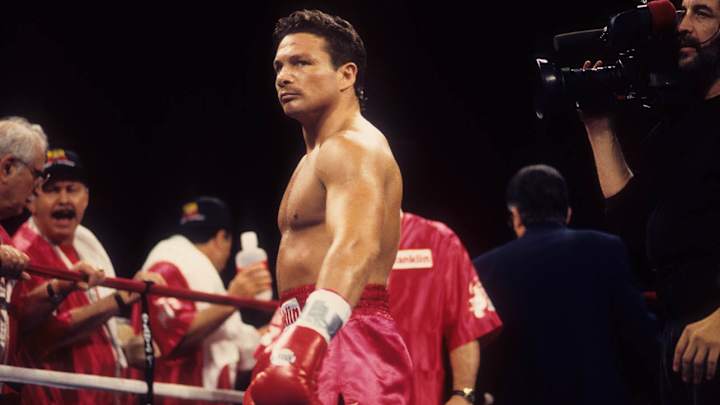
When Vinny Paz learned that his life was finally being made into a movie, he mailed a gift to Miles Teller, the actor who would be playing him. It was an autographed photo of himself, clad in nothing but boxers. "Shove a banana in your undies if you have to make it look bigger," read the inscription. "Don't ruin the reputation, kid. Seriously, don't f--- it up."
The Pazman is as inimitable as ever. This much is clear as he gives a tour of his pink-trimmed Warwick, R.I., ranch house, an overstuffed shrine to the man who launched one of the most unlikely comebacks in sports history. At times, it seems Vinny Paz does not believe the Vinny Paz story himself. "My life is so f------ nuts," he says. "It's amazing. I'm not better than anybody, but I'm different from everybody. I just happened to be a strong little f------ animal."
Paz, now 53, still lives as he fought: without fear or foresight or regard for convention. It's why his postboxing life has been fraught with multiple arrests, bad checks and hundreds of thousands in gambling debts, but also—pointing to the 5x tattooed on the back of his right hand—why he is a five-time world champion. And with biceps bulging out of his blue long-sleeve pullover, Paz wants it to be known that he is still the Pazmanian Devil, the outsized character who fills the big screen in Bleed for This.
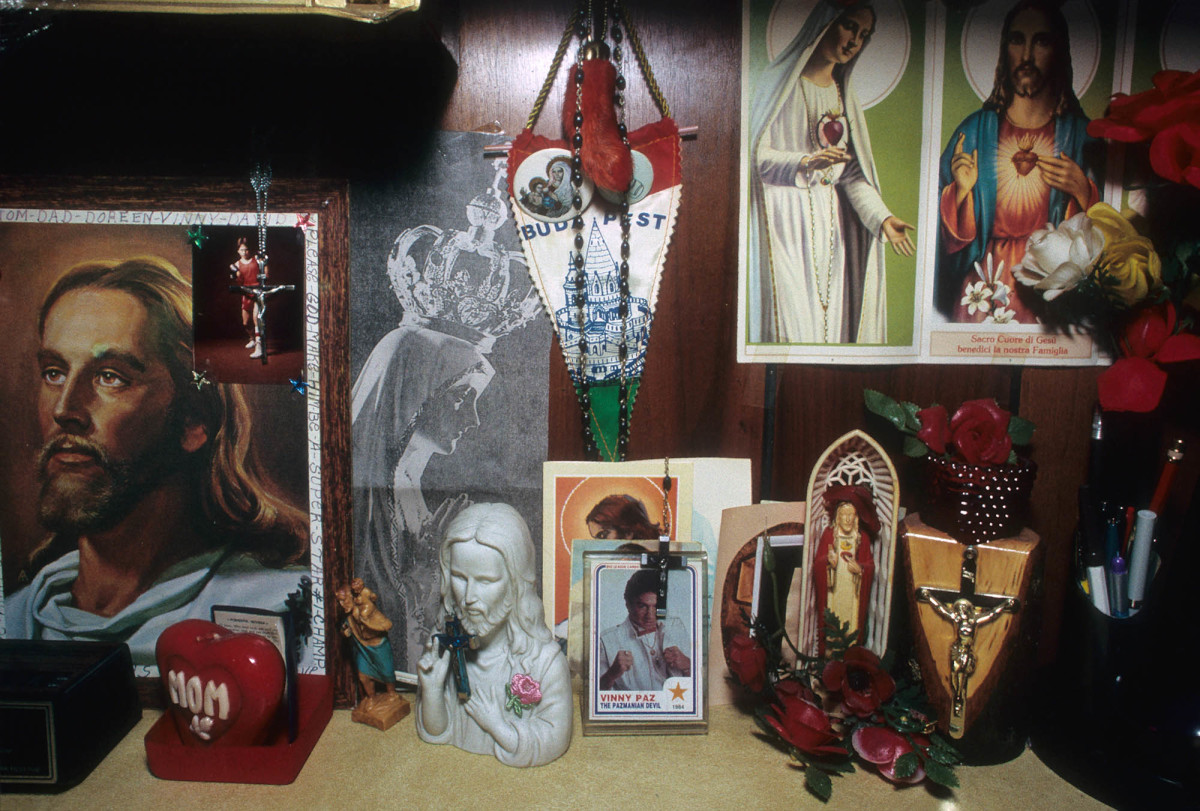
Paz strides into what he calls his Room of Pride, which is overtaken by a blizzard of framed pictures, newspaper clippings, magazine spreads, promotional posters, gloves and outrageously colored trunks and robes. He points out the Wall of Pain, filled with photos from his fights, his own face invariably pulped. Paz tended to summon his best in the later rounds, after rivers of red ran from his eyes and nose and mouth. "I didn't give a f--- about blood," Paz says. He would actually implore opponents to punch him, taunting them by sticking his chin out. Win or lose, he would be rendered almost unrecognizable.
On another wall are shots of naked or half-naked women—porn stars, playmates and strippers, all former girlfriends. (Paz has never married and has no kids. The sign on his front door reads FRIENDS DON'T LET FRIENDS GET MARRIED!) A metallic black Tasmanian devil figurine sits on the floor, three pairs of women's panties dangling off it. Loose photographs from his hobnobbing in the 1990s, when his celebrity was at its peak, spill across his desk: Eddie Murphy, Charles Barkley, Junior Seau, Gene Hackman, Rodney Dangerfield, Shaquille O'Neal, Bruce Willis, Michael Irvin, Burt Reynolds, John Elway, Roger Clemens, Don Rickles.... And now, four weeks before the opening of the movie, Pazman is clearly enjoying his brief return to the spotlight. The movie is what he's been waiting for since he left the ring 12 years ago. Not that he ever doubted that another comeback was in the cards. Even in his lowest moments, he knew he possessed one asset that no one else did: the life story of Vinny Paz.
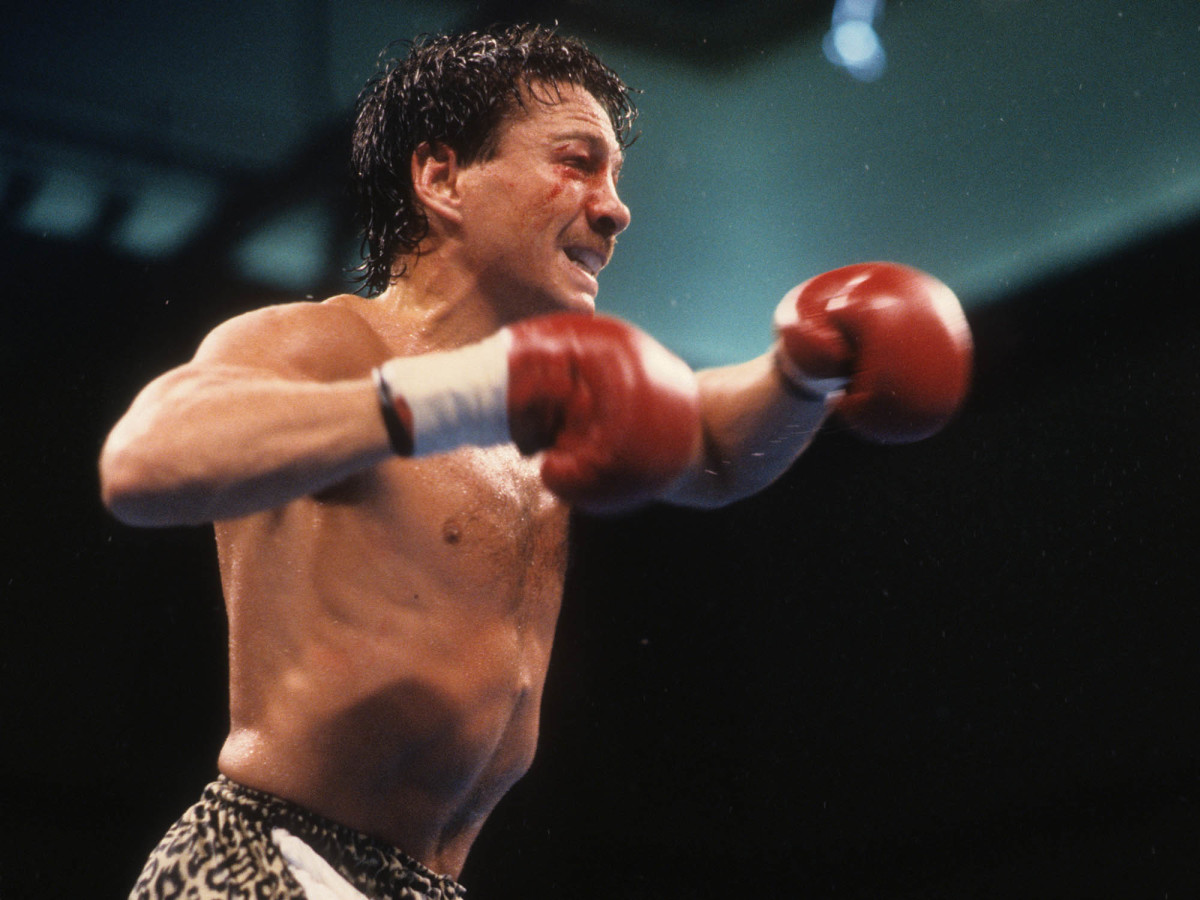
The first person to take a crack at the Vinny Paz screenplay was Paz himself. It was the late '90s and the five-time world champ once dismissed as a showman and a club fighter was one of the biggest draws in boxing for, well, his showmanship and his willingness to trade punches. He had appeared on The Tonight Show and was already sizing up who would play him in a biopic (Keanu Reeves, Mark Wahlberg, maybe Tom Cruise).
Paz wasn't delusional: His boxing career seemed cinematic from the start. Born Vincenzo Pazienza (he legally changed his last name to Paz in 2000), he won his first title in 1987 and, as was often the case, ended up in the hospital after the fight. In his early years Paz fought at 135 pounds, though he was naturally closer to 160. His extreme methods for cutting weight—which included monthlong liquid diets, running in rubber suits, biking wrapped in plastic wrap, taking laxatives—proved untenable. After a few lopsided losses, and one postfight trip to the hospital for extreme dehydration, Paz's own manager publicly suggested he should retire.
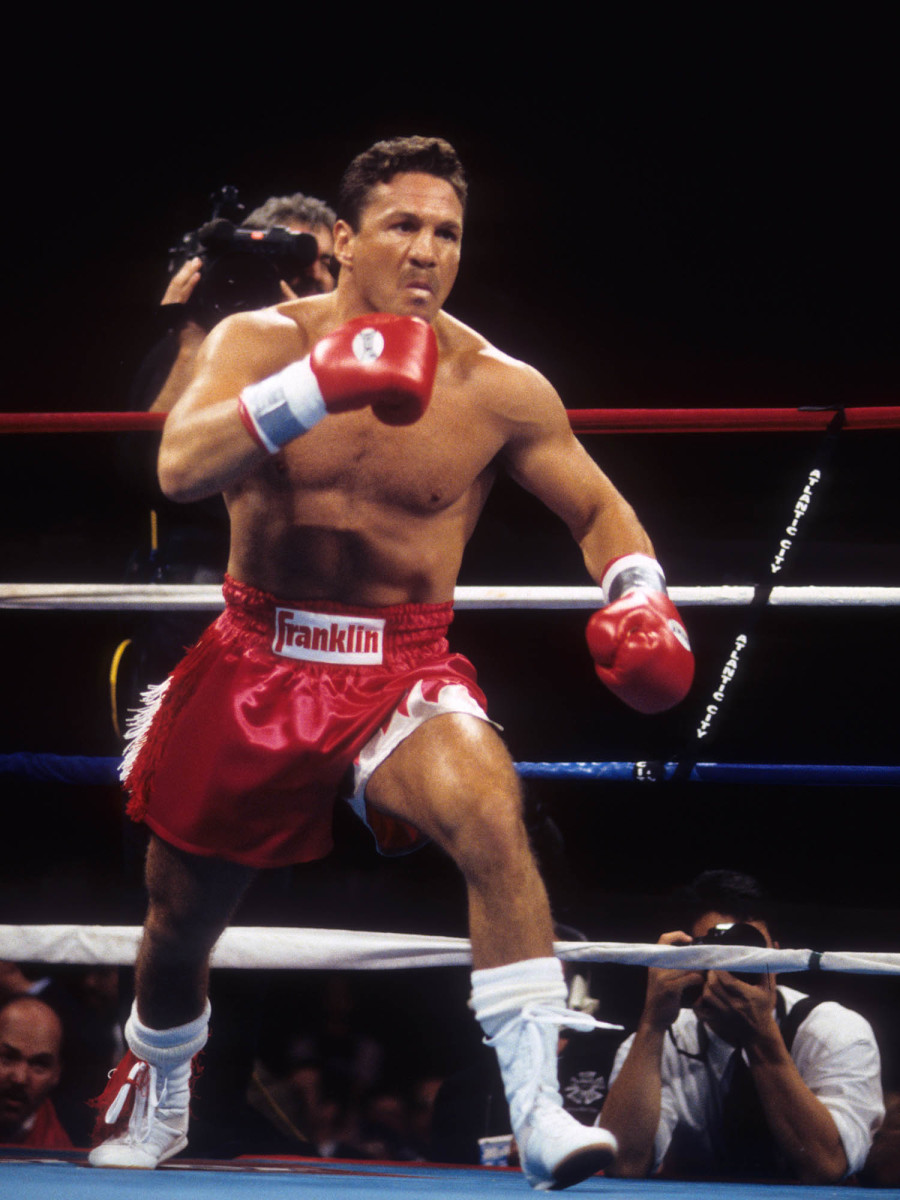
The hard-headed Paz, naturally, disagreed. He moved up two weight classes in 1991 and defeated Gilbert Dele to become just the second boxer to win both the lightweight (135 pounds) and junior middleweight (154) world championships. Then, just a month after the title bout, Paz was riding in a friend's car one night in Warwick when they skidded on a highway and crashed, head-on, into oncoming traffic. When he awoke in the hospital he learned that he had broken two vertebrae in his neck and dislocated a third. Doctors told him that he needed to have his spine fused, that he'd never fight again. Paz refused the operation. Instead he had a metal "halo" attached to his skull, immobilizing his neck for three months. Just days after his release, while still wearing the halo, he was doing clandestine workouts in the basement of his parents' home. Thirteen months after breaking his neck, he was back in the ring, beating future WBC world junior middleweight champion Luis Santana in a 10-round decision.
He returned to the ring 24 times after the injury, winning 19 bouts and three more world titles. (His career record was 50–10, with 30 knockouts.) The material was a screenwriter's dream, but Paz's treatment, which he wrote with a friend, went nowhere. By early 2009 he was in dire need of a break. After blowing $900,000 in a desperation stock gamble in '05 and reeling from blackjack losses, he owed more than $2 million in back taxes, unpaid markers in Las Vegas and loans from friends.
Then one day he had lunch with Chad Verdi, a friend whose background was in mergers and acquisitions. Despite being warned by others against it because of Verdi's lack of film experience, Paz sold him the rights to his life story. "[I was] pushed up against the wall," he says. "I didn't want to lose this house." In October 2009 it was announced that the movie was set for production, with Scott Caan playing the lead. Those plans soon fell apart. A year later Peter Facinelli was attached to play Paz—until he wasn't. Then Angelo Pizzo (of Rudy and Hoosiers lore) signed on for a rewrite. That resulted in a script Paz calls "f------ terrible."
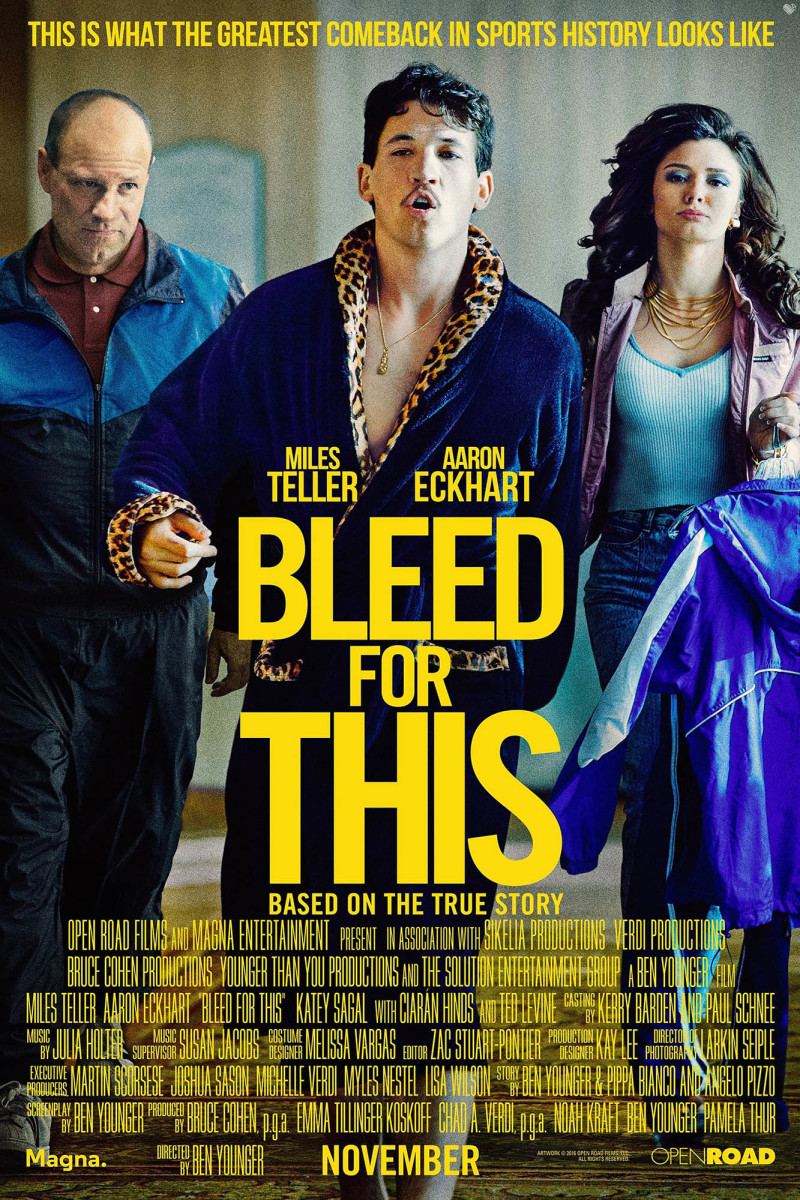
"It so easily could have come out then, and it would have been nothing," Paz says. "It would have gone to Channel 12. Thank god it didn't."
In 2012, Verdi went to Los Angeles to meet with potential new writers; he left after hiring Ben Younger, who had written and directed Boiler Room. Younger chose not to read any of the previous treatments. Instead he went to Rhode Island to meet with Paz. Younger then wrote a script—"just f------ nailed it," Paz says—and soon was on board to direct.
A year later Verdi called Paz with more news: Martin Scorsese had joined the project as an executive producer. Then Teller signed on. Paz spent only one full day on set, sitting and watching as they set up lighting for four hours to get five minutes of action. "This is really f------ boring," Paz told Younger. "I'll see you at the wrap party."
But Paz being Paz, there were squabbles. There's a pivotal scene in which the character is explaining why he can't quit fighting. Paz was adamant that the way he said it—"I'm a world champion!"—was essential to his story. Younger overruled him. In another scene Paz is in a casino in the wee hours, the morning of a fight, playing blackjack. In the movie Paz splits 10s on a $10,000 bet and wins $20,000. Paz was upset with the scene because it wasn't quite true—in fact, he'd won $64,000. It was one of several details that Younger actually had to tone down in the movie because Paz's actual life seemed too improbable.
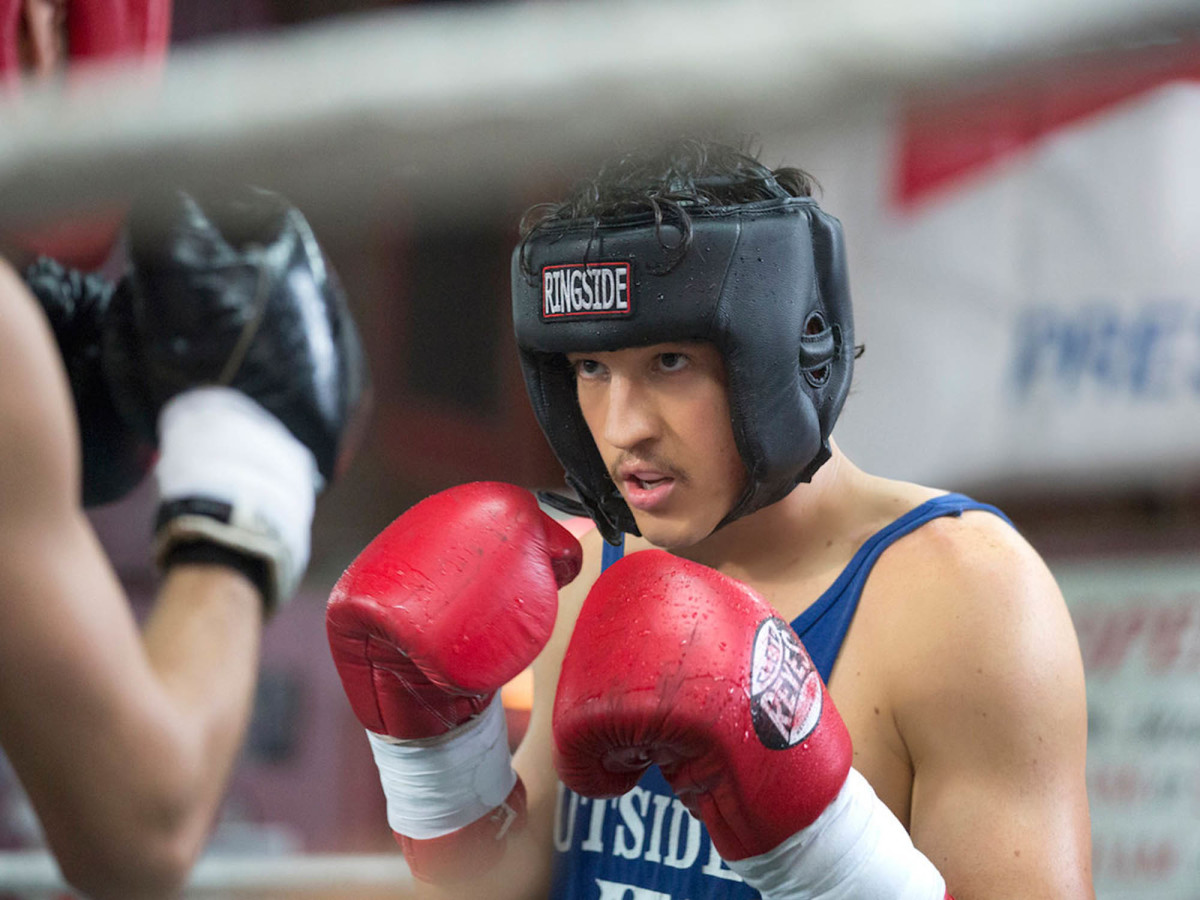
Paz's input, however, was essential at times. When Teller had to bench press while in the halo, he wondered how Paz had done it and complained about the metal squeezing his head. The response: "Suck it up, twatcakes. That thing was in my skull."
Earlier this year Paz watched a final cut of the movie for the first time, with Younger sitting by his side. Paz was worried he wasn't going to like it, but through the screening he gripped Younger's hand. By the time the end credits rolled, his face was streaming with tears.
The tour is over, and Vinny Paz is in his basement, shadowboxing. He faces the mirror as he unleashes furious combinations, trying to prove that he is indeed "the fastest white boy ever in the game." After a few minutes he takes a break. "Still got it," he says. He estimates that during his career he had his nose broken more than 100 times and took 1,000 stitches to his face. He no longer hits the punching bag because his hands hurt too much. But he says he still has a couple of brain cells left, and that's really all he needs.
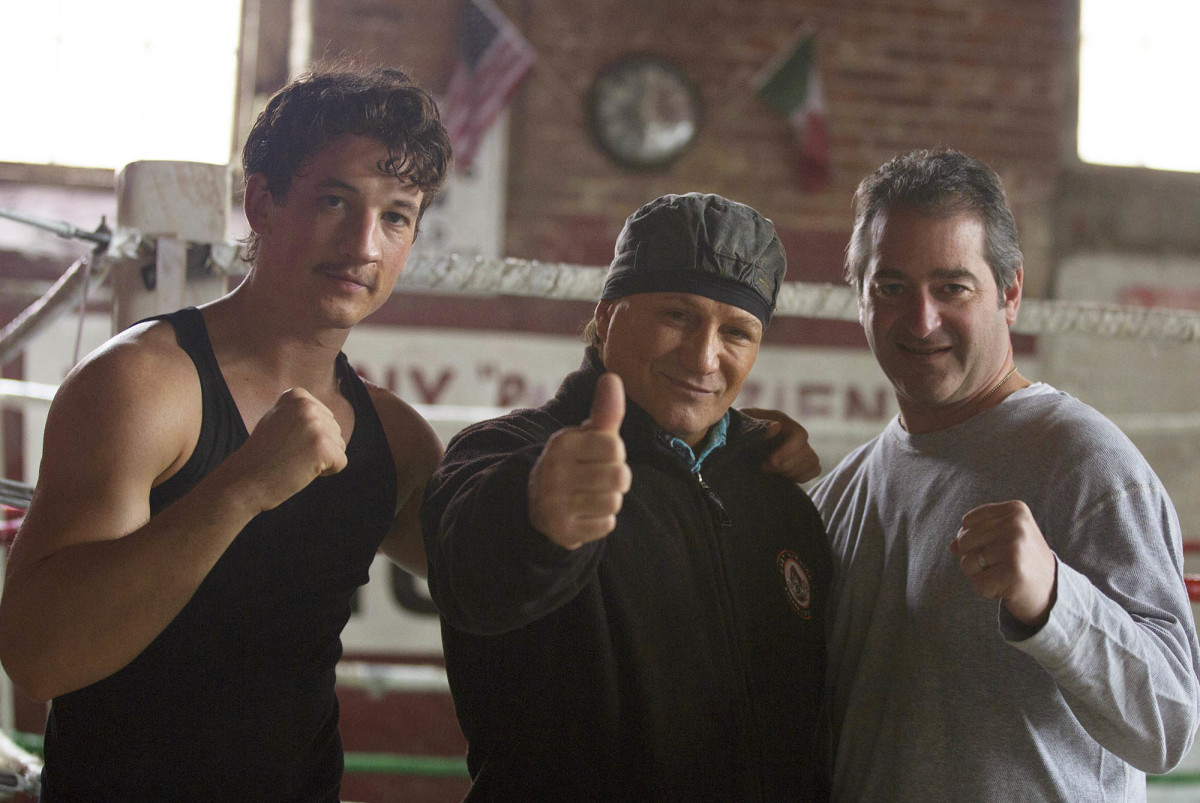
Paz's basement and kitchen were ruined two years ago when his house flooded. They remain relatively barren. "Could be worse," Paz says. "That's how I look at things. That's the story of my life."
It's a story that has touched countless people. All over his desk are letters he has received from admirers who call him their inspiration. The accountant who shared that Paz is the reason he began running marathons. The college baseball coach who said Paz gave him the motivation to follow his dreams. The kid who got Paz's face tattooed on his back. All three, Paz says, are now among his best friends.
Of course his Room of Pride could just as easily be furnished by offsetting artifacts of shame from a number of low moments in his postboxing life. The bankruptcy he declared in 2005. The multiple arrests, from passing bad checks, to drunk driving, to disorderly conduct and assault, to domestic violence. (Paz pleaded no contest to a disorderly conduct charge from a '12 fight at a Providence bar and was sentenced to 30 hours of community service. The assault and unrelated domestic violence charges were dismissed.)
Paz maintains that he has mellowed, albeit in the most Paz way possible. He says he hasn't gambled in 10 years, though it's unclear if that's due to maturity or insolvency. He still goes out drinking just about every night, but to avoid another DUI he has since sold his car. (His license plate once read PAZMAN.) He's had a girlfriend for three years, the first woman whose photo he has made the background on his cellphone. She's 27 years old. She dances at the Cadillac Lounge and volunteers with the elderly in her off-time.
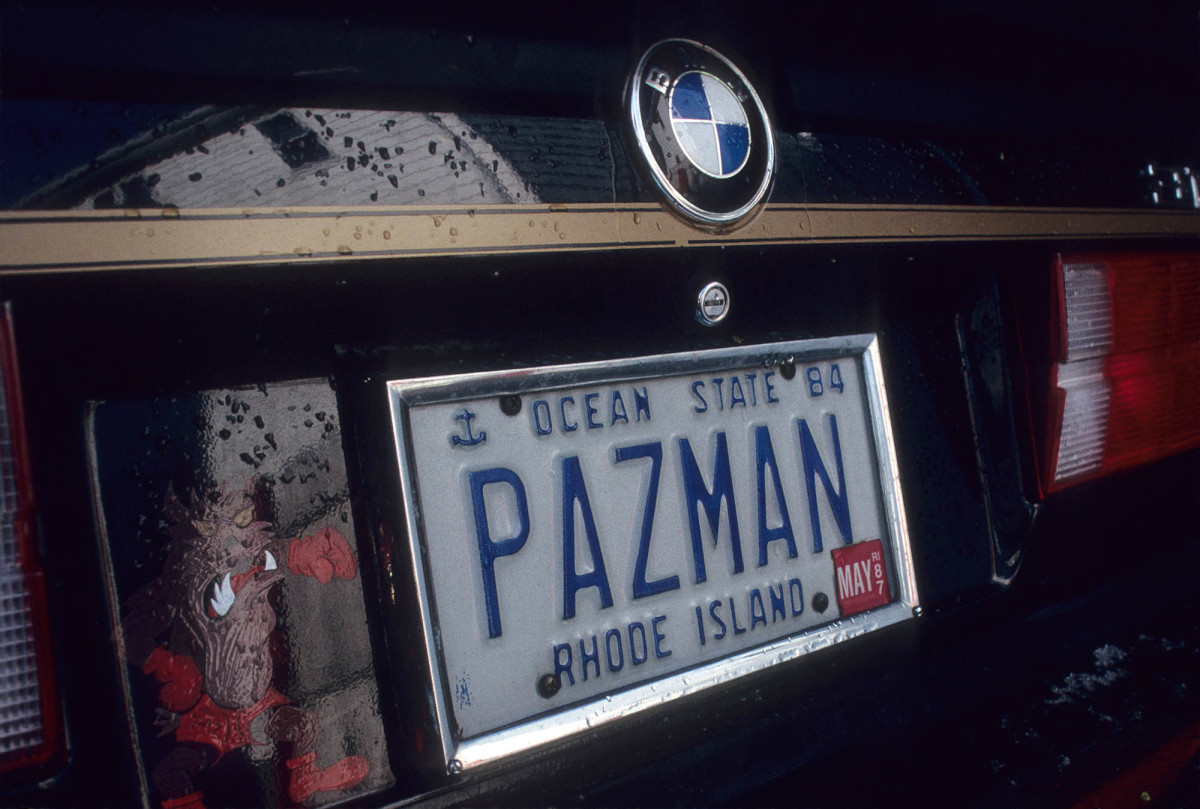
Paz, who was still hundreds of thousands of dollars in debt a month ago, isn't sure what the future holds after the Hollywood parties and the media tours. He has created his own wine label—5X Better—and hopes to land motivational speaking gigs. It's clear that a part of him has always believed that the biopic (which has received favorable, if not rave, reviews) would help him make "big money" again. He received $100,000 for the rights to his life story, but he'll also cash in if the film turns into a hit.
But in the same breath, he says, "I don't give a f--- about money. I just want everybody to see it because I know it's the most inspirational story. One guy told me that he got out of a f------ wheelchair, that he's walking with crutches now because of me. It don't get better than that."
At around 10 p.m. Paz is asked what the rest of his night holds. Same as every other night, he says. He's going to put on a pot of coffee, exercise, take a shower, call a couple of friends, then head out on the town, probably end up at the strip club. Life, he says, has a way of working itself out.
